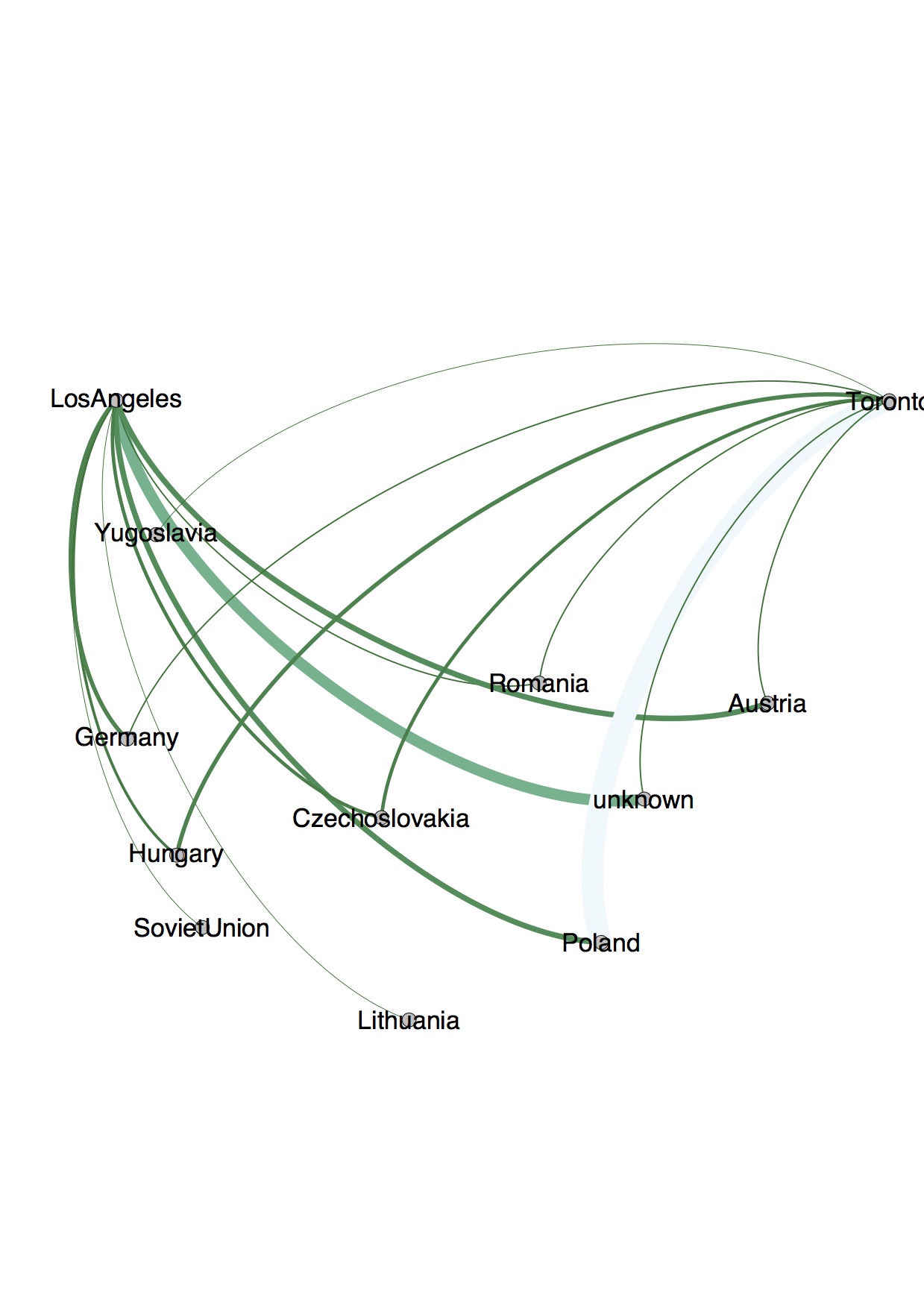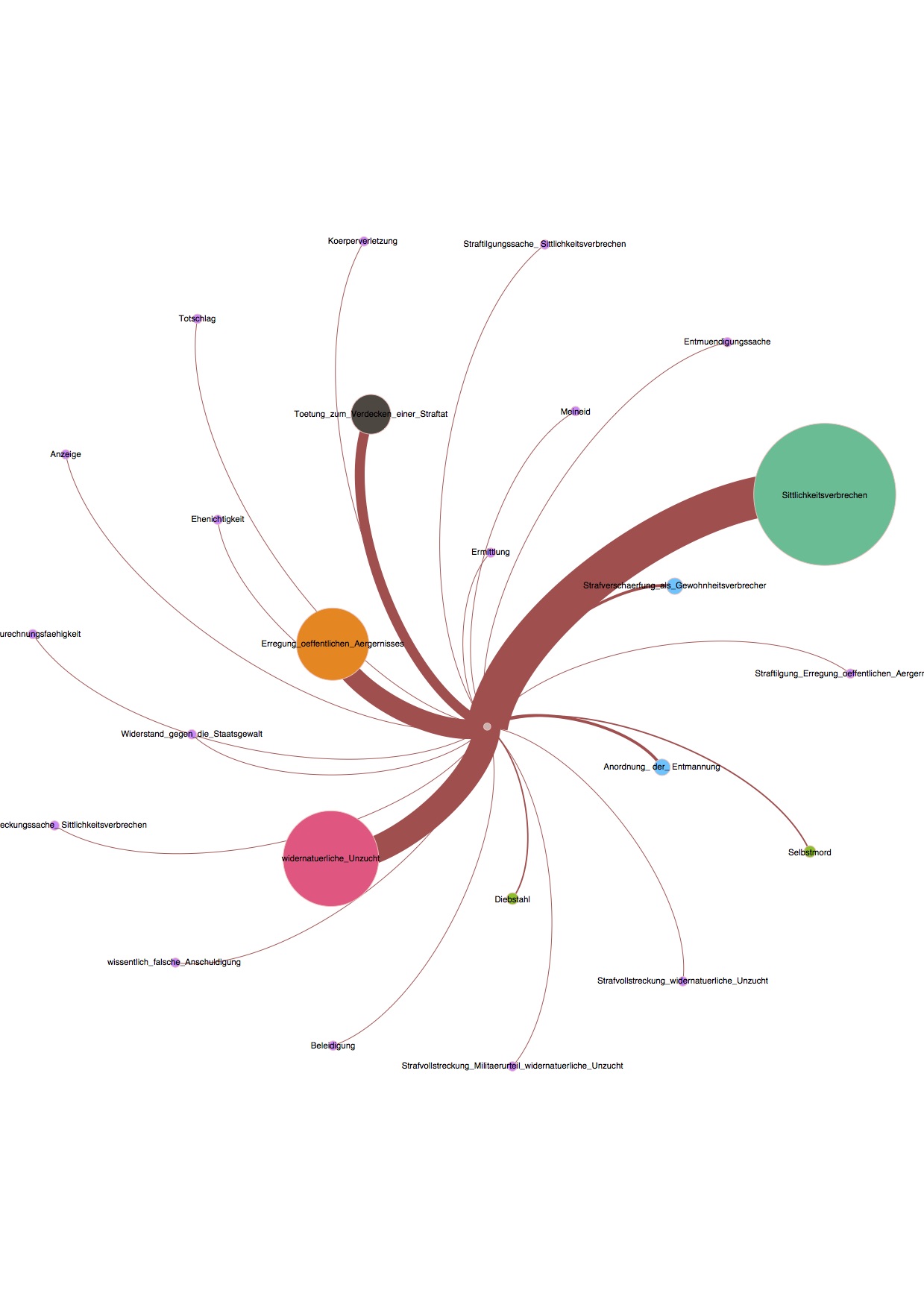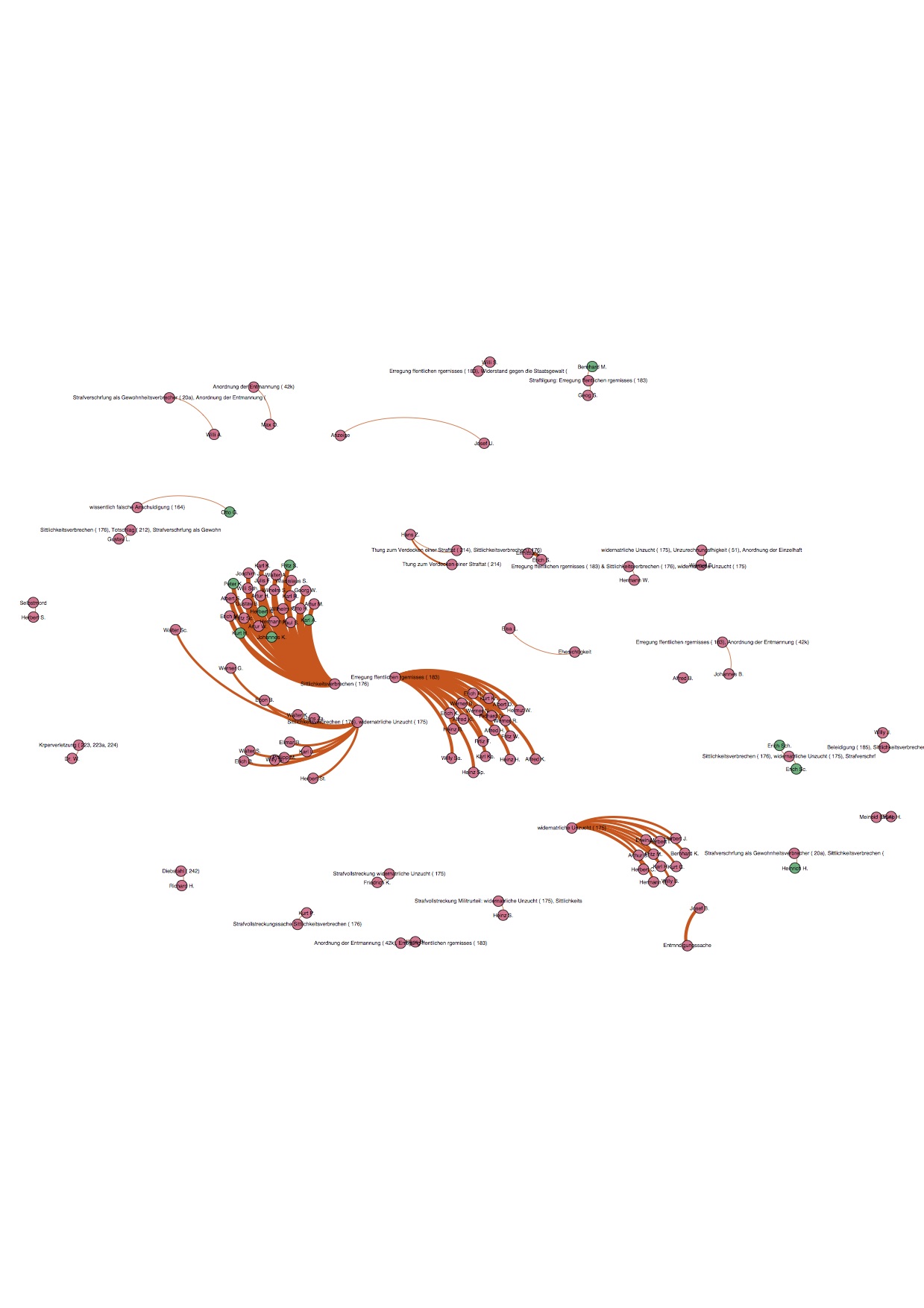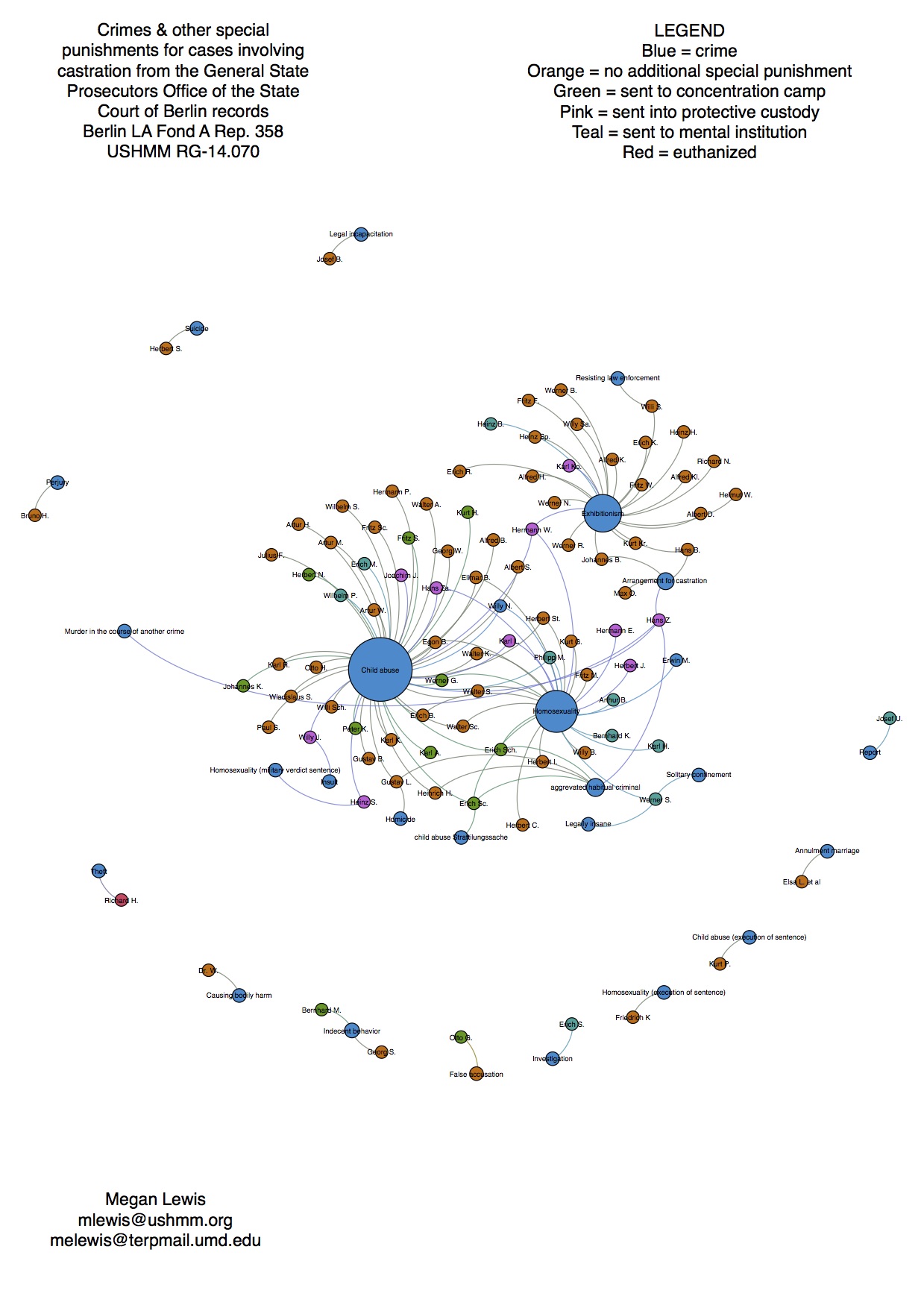Analysing Names Lists
Separate but similar collections
Holocaust archives often contain collections that are related by topic or creator. Camp ledgers of incoming prisoners would be one example. Records of restitution organizations are another. The United Restitution Organization, founded in 1948, provided legal assistance to Holocaust survivors with their restitution and reparation claims against the West German government . At its largest, the URO had offices in West Germany, Israel, the United States, Canada, Argentina, Sweden, Great Britain, Belgium, France and several other countries. In countries with small survivor populations, the URO partnered with other Jewish organizations to provide legal services to survivors . The United States Holocaust Memorial Museum Archives holds the original paper files of the United Restitution Organization (URO) files for their Los Angeles, Buenos Aires and Toronto offices. The finding aids for Los Angeles and Toronto are Excel spreadsheets that include first and last names of claimant, their date of birth, and place of birth. The Toronto finding aid also includes information on which specific program applied to a claimant . Using a sample of 738 claimants from Los Angeles and 535 claimants from Toronto, the author did an analysis to determine if there was any link between a claimant’s home country and which URO office he or she used to file the claim. The analysis was directed, meaning that the links between nodes were in one direction, in this case countries of origin to URO office. In an undirected analysis the links between nodes can go either way, such as when analyzing correspondence between different people.
From the resulting graph visualization, the following observations can be quickly made:
-
A greater percentage of Austrians and Germans used the Los Angeles office, which is not surprising since there was a large German-speaking émigré community in the Los Angeles area.
-
The Los Angeles data is less complete, as the number of claimants with an unknown place of birth is much larger than for Toronto.
-
Survivors from Poland included in these example datasets were more likely to apply using the Toronto office, again not surprising because of immigration patterns.
The limited data included in the Los Angeles URO finding aid precludes any further in-depth comparison with the Toronto data. However, further work could be done using the Toronto data alone, for example by determining what percentage of claimants applied to each claim program or to determine how many claimants applied to multiple programs.
Visualizing data from one collection
One of the largest collections in the United States Holocaust Memorial Museum Archives is RG-14.070, the General State Prosecutors Office of the State Court of Berlin records (Berlin Landesarchiv Fond A Rep. 358.)
This collection contains approximately 150,000 cases from the Berlin prosecutor’s office from 1933 to 1945. The cases include both Nazi-specific crimes (political offenses, race defilement) and ordinary crime (theft, manslaughter, illegal duplication of keys.) The finding aid is an Access database that allows for each searching but not for easy analysis of the cases. The Berlin Landesarchiv developed codes

| Victim type | Special Punishment |
|---|---|
|
Ausländer (AL) Foreigner |
Asocial Sicherungsverwahrung(SV) Preventative detention |
|
Juden (JD) Jew |
Heil- u. Pflegeanstalten (HP) Mental institution |
|
Homosexuelle(HS) Homosexual |
Euthanasie (EU) Euthanized |
|
Politisch Verfolgte (PO) Political persecutee |
Kastration (KA) Castrated |
|
Gewohnheitsverbrecher (GV) habitual criminal |
Todesurteil (TD) Death Sentence |
|
Deserteure (DS) Deserters |
Hinrichtung (HR) Execution |
|
Sinti u. Roma (SR) Roma and Sinti |
Straflagerhaft (SL) Prison Camp |
|
Bibelforscher (BS) Jehovah's Witness |
Einweisung in ein KZ (XKZ) Concentration camp |
|
Asozialer (AS) |
|
Network based on punishment
Castration was used as a special punishment and 130 were subjected to it. Looking at these cases, the following questions can be asked: What crimes did they commit? Did these men commit multiple crimes? What other punishments did they receive?
Using the same set of data, the following three graph visualizations were created. The first graph charted what types of crimes the castrated men committed. Using statistical tools built into the Gephi program, number of instances of each type of crime were statistically weighted. The weight of each crime is indicated by both node color and size. The author was surprised to learn from this graph that the third most common crime committed that lead to castration was exhibitionism/creating a public disturbance. The most common two crimes were not surprisingly child sex abuse and homosexuality.
The following graphs demonstrate the importance of direction. In creating a graph in Gephi, one set of variables is the source and the other set is the target. Switching the source and the target within a directed graph provides very different results. visualizes the data when the type of crime is the source and the individuals are the targets. In this example individuals who committed more than one crime are not connected to both crimes. While this graph gives a good snapshot of the different crimes available it does not display the network very well.
In , the directed relationship was reversed. The individuals were the source and the types of crime were the target. This graph allows one individual to be connected to more than one type of crime and better illustrates the relationship between individuals and crimes. From this graph, a researcher can tell that a sizable percentage of the castrated men were charged with both homosexuality and child sex abuse. The use of the Fruchterman-Rheingold algorithm on the data in this graph forces the more connected crimes and the crimes with more instances to the center of the graph.
also displays another feature of social network analysis graphs- the ability to assign different attributes to nodes and indicate them by using different colors. In this figure, the different attributes indicate any additional punishments applied to the individual. In the case of the castrated men, the most common additional punishments were being taken into protective custody and being sent to a concentration. By making the effort to include attributes in a data visualization graph based on a finding aid, an archivist can expose the collection to researchers who may not otherwise consider the collection as a resource. For example, the castrated men may be of interest to historians studying Dr. Carl Peter Jensen, aka Carl Vaernet, a Danish doctor who conducted pseudo-medical experiments on artificial hormone implants in the Mauthausen concentration camp . He used castrated men in some of his experiments. A brief search for five of the men sent to concentrations camps in the International Tracing Service records revealed that two died in Mauthausen. Additional research would be needed in the Mauthausen records to determine if these men were part of Carl Vaernet experiments. Researchers studying mental institutions in the Nazi era, which were part of the euthanasia program, now have several additional names to research.
The networks around the edge of the graph in Figure 5 show the less common types of crimes and other investigations, plus additional punishments. Richard H. was arrested for theft and later was euthanized. Willi B. resisted law enforcement but suffered no additional special punishment. The Prosecutors Office investigated one suicide and one case of legal incapacitation within this group of men.
The General State Prosecutors records are an ideal candidate for additional analysis and visualization because of the inclusion of the special codes by the creator of the finding aid. This author is currently working on visualizations using cases that involved Rassenschande (race defilement) and individuals given the designation GV, Gewohnsheitverbrecher, or habitual criminal. Initial results of the GV analysis review that only a small percentage of the individuals were charged under paragraph 20a of the German criminal code which defined the conditions for the designation to be applied.



Unfortunately, most finding aids are not as rich in detail. This author envisions more complex network analyses that can be made, such as comparing a memorial names list created from testimonial sources to a list from a finding aid of a collection from the same place, analyzing lists from two archival finding aids about related topics from different organizations, and an analysis of two lists based on testimonial of victims from the same place. An extremely complex analysis would involve survivors originally from Austria who used the services of the United Restitution Office, the list of Austrian Jews who filed property declarations known as Recht als Unrecht (which has both memorial and finding aid functions), the list of Jews whose automobiles were confiscated created by the Vienna Technical Museum and the lists of claimants on the Austrian government website findbuch.at.